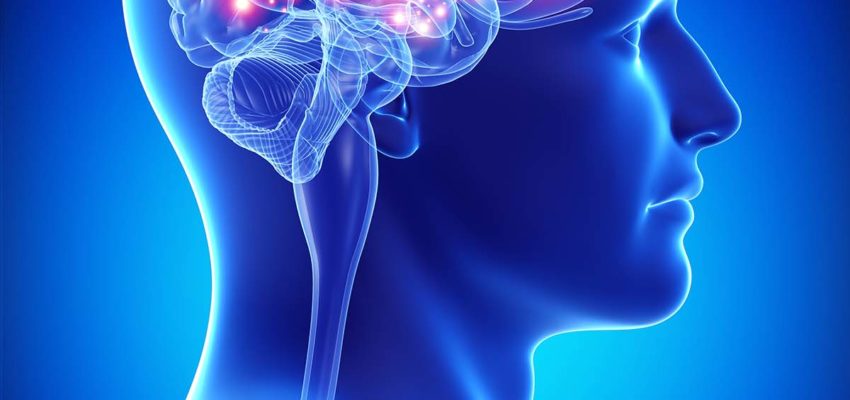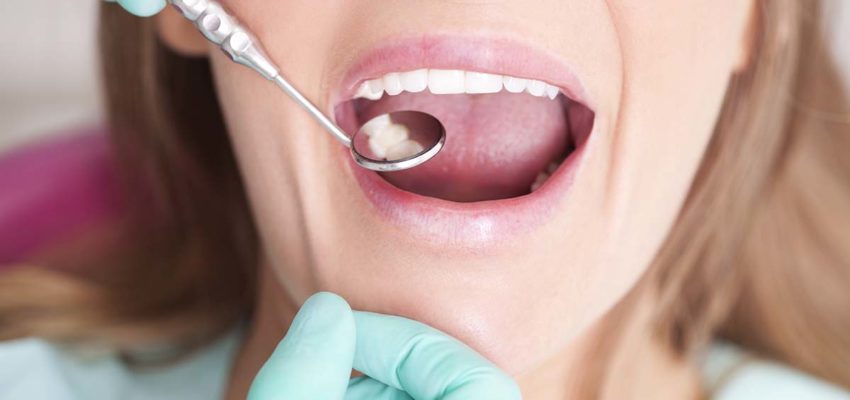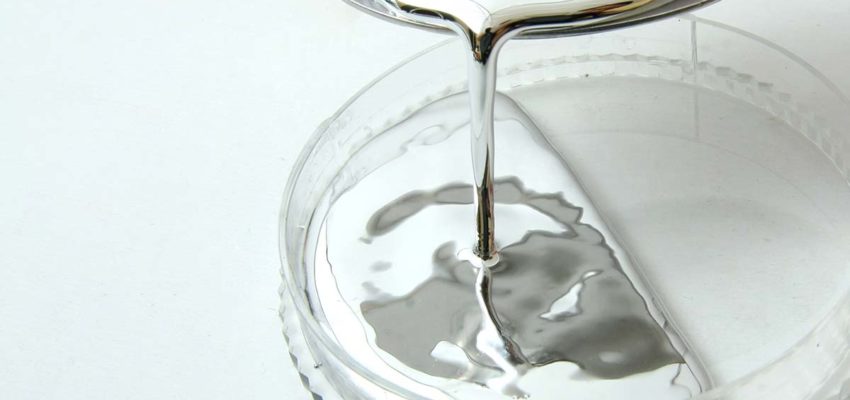The Interference Field and its Elimination by means of a Lightning Reaction – Huneke Phenomenon

Introduction
All new knowledge has to overcome two hurdles: the prejudice of the experts and the inertia of established theories.
All our efforts in the segment are doomed to failure if the morbid processes are not based on the segment at all or if they are so no longer! Whenever our usual therapy is not successful, we must therefore always bear in mind that interference from a remote point beyond any segmental connections is capable of causing or favouring any chronic disorder. In our experience, this accounts for at least 30% of all illnesses.
Huneke has shown us that excessive pathogenic stimuli can have their origin in interference fields (= centres of irritation) which reach out beyond any segmental principle of order and are capable of setting off illnesses in any part of the body. It is therefore never possible to cure such disorders by any measures restricted to the site of the disorder, not even by surgery, but only by the lightning reaction. Apparently their reflex arc extends all the way into the autonomic centres of the brain. Whilst modern symptom-and organ-orientated therapy must often content itself with identifying and, where possible, treating merely the terminal links of a pathological process, the lightning reaction exerts its normalising effect at the point of origin of the pathogenetic chain. This accounts for the many improbable cures claimed time and again by neural therapists. In this type of case there is no other way to achieve a cure, even if opponents of neural therapy stubbornly deny that these cures have been achieved.
The interference field is thus something for which, time after time, we have to search. Chronic inflammations, residues of healed inflammatory processes, foreign bodies and scars; all and any of these can produce such a strong, persistent irritation in the neuro- vegetative system that it will be in a continually disturbed state as a result of such constant interference. Such a stimulus may come from devitalised or focally infected teeth, from the tonsils, adenoids, or from scars in skin, mucosa or bone. The prostate, the gynaecological area, the liver, gallbladder or stomach, the appendix and any other organ within the abdominal cavity or elsewhere can give rise to such an irritative process. In a nutshell: Any point of the body can become an interference field!
In my view, an interference field is any pathologically damaged tissue which, on account of an excessively strong or long-standing stimulus or of a summation of stimuli that cannot be ablated, is in a state of unphysiological, permanent excitation. The mutual cybernetic relations between periphery and centre must depend on the normal transmission of information and orders, and this can be effected only via the channels of a complete and intact (basic) autonomic system. Nerve function in accordance with the “all or nothing” principle. In other words, all the signals have to be expressed in terms containing only the characters 0 and 1, the classic binary system. This is the same as the only language that a computer an electronic replica of the brain, can understand.
The signal-transmission code relies on constantly changing impulse frequencies. The disturbances produced by an interference field are always without aim or purpose and are >bound to produce chaos because they transmit false information which misleads the regulating mechanisms and is therefore capable of producing calamitous disturbances.

The Dental Interference Field
When one hears that the teeth together with the paranasal sinuses and tonsils form the most frequently encountered interference fields, one is bound to pay a great deal more attention to this important area in the future. A dentist’s certificate stating that the teeth need not be regarded as a “focus” because the x-rays showed no granuloma to be present, or to reach the same conclusion on the strength of a simple visual inspection, are unsatisfactory and worthless.
The neural therapist’s difficulty in assessing the mouth and teeth begins with his need to rely on information that must normally be provided by a dentist. Unfortunately, most dentists have not yet recognised the changes that have to be regarded as possible causes for illnesses due to an interference field. It is therefore worthwhile for the non-dentist to occupy himself sufficiently intensively with this complex field, which is so important in the morbid processes which concern us, that he will become largely independent of the dentist’s judgment and capable of making the necessary decisions on his own.
In order to be able to do this, we need a full set of x-rays of the jaws. These should be made for the full extent of the jaws, regardless of whether teeth are present or not. First of all, this will to a large extent provide an answer for us as to the presence of any devitalised teeth. If any filling material can be seen in the pulp or root canals, then the tooth is devitalised. The same applies to heavily carious teeth, pivot teeth and discoloured teeth. Discolouration results from the decomposition of protein within the tooth. Often, the shadows cast by a metal crown covering a filling make it impossible to judge this. It is therefore always advisable to include such teeth in the list of suspects. A tooth can become devitalised simply by grinding, or by thermal, chemical or traumatic stimuli, without necessarily having had root-canal treatment. In order to clarify this, we need to ask the dentist to carry out a vitality test, or to do such a test ourselves by means of a suitable instrument (eg. Testator).
Many dentists still hold to the outdated idea that only an apical granuloma visible on an x- ray will “disseminate”, more or less according to its size, and produce remote disease only via the bloodstream, and that a devitalised tooth without periapical abnormality must by the same token be innocent. But this attitude is wrong. Dentine contains protein which, after a tooth has become devitalised, is subject to decay. The products of decay, such as mercaptan, can produce neural irritation. Dentine is traversed by fine parallel canaliculi in which all the elements of interstitial connective tissue are present: autonomic terminal fibres, and capillary and lymphatic vessels. According to Pischinger, all inflammatory reactions occur in this ubiquitous basic tissue, including the formation of interference fields. A “devitalised” tooth is thus still linked to the rest of the organism via its inter- connections from the interior of the tooth, by its dentine and cement, at least as regards the metabolic processes. Biologically speaking, therefore, a “dead” tooth is not dead at all, nor is it an isolated foreign body. If it were, it would be rejected as a bony sequestrum.
For us, chronically inflamed dental pulp is suspect as a possible interference field, all the more so any necrotic or gangrenous pulp. At this point, x-rays and clinical investigations can desert us completely. Even a vitality test can mislead, since moist gangrenous pulp may produce a positive reaction to a flow of stimuli. Chronic pulpitis may occur with advanced caries, in badly places silicate or plastic fillings with inadequate lining to protect the pulp, as a result of corrosive material used in dental care, and also by overheating if a tooth is inexpertly ground. It can also occur as a result of trauma, of an internal granuloma, where there are deep alveolar pockets, and via the bloodstream in the train of general diseases such as diphtheria or septicemia. Many a failure in dental treatment can be laid at the door of these inflammatory conditions in the dental pulp, clinical diagnosis of which is extremely difficult. Nevertheless, they act on the basic regulating system as a continual additional stress factor (Pischinger).
A granuloma is a terminal condition of a chronic inflammatory process and, as such, already acts as a secondary focus. The primary focus in the root canal cannot be seen on an x-ray. Long before the granuloma is formed, this primary focus may become an active interference field by the interconnecting canaliculi to which reference has already been made. Changes in the x-ray picture occur only when tooth and jaw have already been diseased for some time. The electrical skin test and thermography (see chapter on test and provocation methods) can tell us something about the location of a focus or interference field well before an x-ray picture. A granuloma is merely the product of defensive measures taken by the organism as its reaction to the inflammatory materials produced by the decomposition of intradental proteins. It tells us only that the tooth is devitalised, but nothing as to whether it is now acting as a disseminating focus. There are some teeth with granulomas which can not be shown to be doing any damage anywhere in the body for the time being, because for the moment they represent only an inactive and potential interference field in an organism in good defensive condition. Human teeth can produce a bite pressure of up to 80kg. The thought that each time the teeth are champed together toxins are squeezed out of the bacterial granuloma to give the carrier a minute injection of poison with every bite is somewhat disquieting. No conscientious dental surgeon will ever leave a granuloma in situ; he will remove it because he knows that these sealed-off foci and temporarily quiescent interference fields are like ticking time bombs ready to explode at any moment when the body’s defences are lowered by internal or external stresses. In the case of a devitalised tooth without a granuloma, however, he hesitates to adopt the same reasoning process. Yet he ought to know that a rarefying osteitis need not necessarily show on x-ray but can still be more dangerous to a patient’s health than the sealed-off granuloma encapsulated in connective tissue. He seems literally to cling to every tooth. Many dentists are still most reluctant to extract devitalised teeth. When shall we at last reach the point when recognition of this will extend to the “conservative root-canal treatment” which so often opens the way for other disease processes?
Unfortunately, teeth with apical granulomas and devitalised teeth do not exhaust this subject. Remote neural disturbances can also be caused by inflammatory changes near the roots of teeth, which barely show on x-rays, by osteomyelitic foci, by displayed teeth, by teeth used as buttresses for bridgework and therefore subjected to excessive stress, and by radicular, paradental or follicular cysts. In cysts there is a constant decomposition of protein. This, together with the tendency of cysts to grow, is a sufficient reason for their removal, and the same also applies to ondontomas, conglomerates of dental tissue, hyper- cementoses and all sclerosing processes in the mandibular or maxillary bones. Gingivitis, stomatis and paradontoses also interest us in this context. Pathological alveolar and gingival pockets, particularly those producing secretion, also deserve attention as sources of chronic irritation, as do any inflammatory conditions around dental crowns or projecting fillings. Even a stomatitis which occurred years ago and left no visible changes can have left behind a latent interference field that may become active at a later date by some second insult (trigger-factor) to the system.
Residual osteitis deserves special mention in this connection (ie. alveolar osteitis, primary chronic osteomyelitis). The importance of this condition in any search for an interference field is becoming increasingly recognised. Formerly, the patient’s defensive capability was still intact enough to enable the gums generally to heal by themselves after a dental extraction. Nowadays, environmental and internal pollution seems to have reduced this defensive capability. This state is made worse through the routine use of prophylactic antibiotics. This is one of the contributory factors to the present situation, where about half of all patients suffer from some form of residual osteitis, a condition extremely difficult to diagnose and which can easily become a new interference field. These are persistent chronic inflammatory conditions in the maxillary and mandibular bones, which can occur after the extraction of devitalised teeth or around apical residues or foreign bodies (eg. bits of amalgam). Their identification and evaluation by x-ray is not always easy and calls for a certain amount of experience. These changes are not sharply defined and can generally be recognised only by their blurred bony structure. The overlying mucosa may show livid discolouration and the bone may be sensitive to pressure. Is the residual osteitis is on the surface of the bone, it is possible to penetrate into the soft bone underneath with the point of the needle used for the local anaesthetic. In such cases, surgery becomes indispensable. A large area of bone is exposed and the mushy necrotic tissue is curetted away down to the healthy bone. This process often proves to be far more extensive than the x-rays had given cause to suspect. Hopfer found residual osteitis in more than a quarter of all his patients. A large percentage of these caused remote disturbances. Sollmann drew attention to sclerosing changes in the retromolar space which can produce a similar interference-field effect.
The Spanish stomatologist Adler drew my attention to the fateful part that can be played in the context of interference fields not only by impacted but also by untreated “healthy” wisdom teeth. With advancing age, there tends to be a physiological alveolar atrophy. Teeth grow from the crown towards the root and do not shrink with the draws. In the lower jaw they move ever closer to the ascending branch and often exert pressure (ie. an irritation) on the mandibular canal. Almost all wisdom teeth, especially those that are out of alignment, have deep marginal pockets from which a chronic bacterial and inflammatory irritation goes out to the tonsils and the cervical lymphatic glands. In his view, these teeth become interference fields so often that a more appropriate name for them would be “teeth of misfortune” rather than “wisdom teeth”. Adler removes these neurally and bacterially disturbing teeth, with excellent results. In his experience, they are especially liable to produce irritations of the cervical spine (-> cervical syndrome). But they are also the cause of many other disorders, including “emotional crisis”. According to Adler, in the presence of interference fields in the maxillary region, there are always typical painful pressure- sensitive points beside the lateral processes of the second cervical vertebra. Palpation of these will indicate the side of the upper jaw which is involved, but without at the same time also telling us which tooth is concerned. Mandibular interference fields produce pressure- sensitive points near the lateral processes of the third cervical vertebra. These “Adler’s points” are very useful for a first approximate orientation.
Different metals placed in a solution are known to produce galvanic current. Yet, how many teeth are treated conservatively without regard to the fact that various types of metals are sometimes used (gold, silver amalgam, steel etc) in order to “preserve” them skilfully? If we take into account that the current produced in such cases can reach 800mV and more and can thus be considerably greater than that used for an ECG (1 to 2 millivolts) or an EEG (5 to 50 microvolts), the obvious conclusion is that such non-biological exogenous energy which the organism is unable to metabolise can produce interference and act as a source of illness in anyone with the appropriate predisposition. In addition, the flow of current can also produce electrolysis of toxic mercury ions in amalgam fillings. Further, in root canal treatment, in fillings, crowns and grafts in the jawbone, different types of metallic and non-metallic substances are used. Over the years, these may act as “depot antigens” (Altmann). Metals and metal alloys often suffer from corrosion, when the free metallic ions can produce allergic reactions at remote sites. Even when modern plastics are used, there can be no certainty that there will be no allergizing side effects. Even minute quantities can produce serious consequences.
In children, devitalised and unerupted deciduous teeth can play as important part (eg. in lack of appetite, asthma, eczema etc) as the permanent teeth. Irregularities in the position of the teeth, especially the narrowing of the interdental spaces, are also significant.
They, like any other unphysiological condition, can lead to remote disturbances. Early orthodontic treatment thus has not only a cosmetic effect but also a prophylactic value.
In this context, Stacher described the following case. A specialist in internal medicine always suffered severe attacks of trigeminal neuralgia after consuming small quantities of alcohol. These attacks were taken as evidence of an alcohol allergy. They disappeared when, in accordance with the recommendations made by a neural therapist, the wrong bite of an otherwise unsuspect dental crown was corrected, although this advice was accepted with scepticism and reluctance by the dentist. This cure proved that in this case the irritation of the jaw due to structural stresses was alone responsible for the profound reversal in the patient’s reactive state.
Amongst the abnormal states and foreign bodies we must also include bone grafts and the like. Obviously, these can also acquire the character of interference fields.
Even an endentulous alveolar margin is no guarantee that it will not harbour an interference field. Apart from residual osteitis, remnants of roots and foreign bodies to which reference has already been made, the scars left by extractions can themselves create interference fields. Hence, we do not advocate excessive dental clearance as this was, for a time, standard practice in the United States. We must always bear in mind that excessive dental treatment may hold the risk of acting as a trigger factor. Dental treatment should therefore be carried out only after due consideration and calls for conscientious and skilful execution.

Summary of possible ondontogenic foci and interference fields
- Incompletely filled root canal
- Root-canal filling not sufficiently compacted
- Root-canal filling complete and compacted
- Widened periodontal gap
- Alveolar compact substances cannot be completely visualised
- Alveolar compact substances markedly increased
- Diffuse periapical granuloma
- Well-defined periapical granuloma
- Cysts
- False track with empty residual canal (lateral lightening)
- Overlapping filling with interdental bone resorption
- Septal dystrophy without identifiable cause (gingivitis?)
- Septum changes in the sense of a paradontosis with horizontal and vertical atrophy
- Inter-radicular septum processes (bifurcation anatomy)
- Residual root in antrum
- Foreign-body inclusion submucously or in the spongy substance of the bone (amalgam, cement, gutta-percha lining)
- Residual root in edentulous alveolar margin
- Residual osteitis
- Osteitis around root of deciduous tooth
- Remains of deciduous tooth
- Embryonic tooth
- Impacted or semi-impacted tooth
- Tilted tooth
- Dislocated tooth
- Fractured tooth
- Difficult dentition
- Apicectomy
- Relapse after resection
- Interdental granuloma without visible x-ray changes or periapical granuloma
- Radicular resorption in the living tooth
- Tooth with reduced vitality
- Paraodontopathy
- Interference currents due to the use of different metals or fillings.
The International Society for Electro-acupuncture in Germany (D-731 Plochingen) has published a table by Voll and Kramer on “Odonto-stomato-alveolar conditions and their energy relationships to the rest of the organism”.

Conclusion
Inspection and x-ray examination of the teeth must be the starting point for any neural-therapeutic treatment. The dentist should remove any residual roots and dental granulomas without needing to be told to do so. All possible interference fields that might still remain in the dental region should then be tested by electrical and other provocation methods, although this is generally left to the end of our efforts (see p158). If these tests produce a Huneke phenomenon, patient and dentist will be easy to win over to thorough dental treatment. If our treatment, including dental testing, is unsuccessful, and if the patient is seriously ill, complete dental treatment must be carried out. As already stated, this also applies where tests have proved negative.



